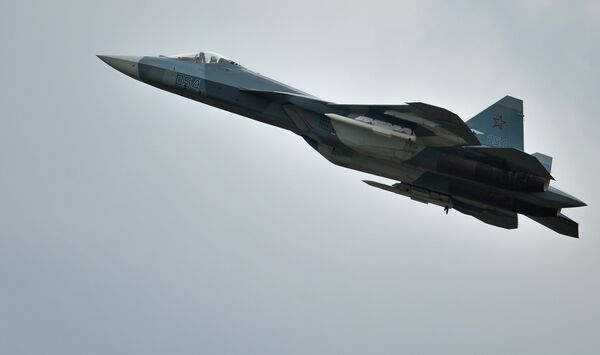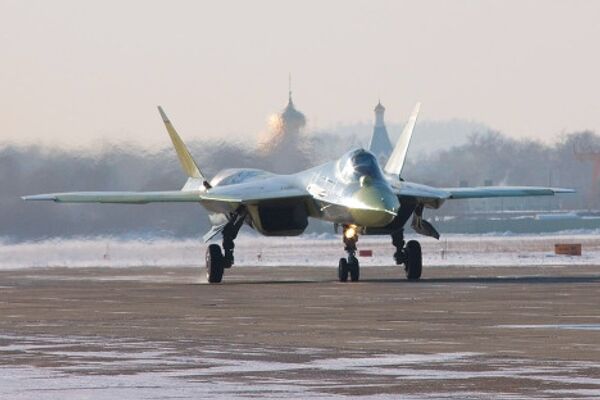Last year former US Air Force intelligence chief Lt. Gen. David Deptula told The National Interest that “the analysis that I have seen on the PAK-FA indicates a pretty sophisticated design that is at least equal to, and even superior to US fifth-generation aircraft.”
He added: “It certainly has greater agility with its combination of thrust vectoring, all moving tail surfaces, and excellent aerodynamic design, than does the F-35.”
Russian military experts are certain that it definitely is superior to its US counterparts in every way.
Besides its ability to fly at speeds well above Mach 2, the T-50 boasts other, even more important, features such as invisibility to radar, powerful weapons and high maneuverability.
The single-seat, twin-engine jet fighter — the first operational aircraft in Russian service to use stealth technology — is designed for the air superiority and ground attack functions.
The Sukhoi PAK FA fighter jet is ready to go into production next year, and is to some degree a flying robot, which renders the pilot a part of the plane’s control system.
The use of composite materials, innovative technologies, advanced avionics and engines ensure the T-50’s extremely low level of radar, optical and infrared visibility.

The T-50 also carries the upgraded BINS-SP2M strapdown inertial navigation system that autonomously processes navigation and flight information, determines position and motion parameters in the absence of satellite navigation, and can integrate with GLONASS, Russia’s space-based satellite navigation system.
In December 2014, Russia’s United Aircraft Corporation announced that production of the fighter was ready to begin in 2016, following the completion of the testing phase.
Fifty-five PAK FA jets will be delivered to the Russian Air Force by 2020.




